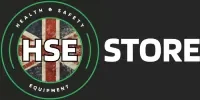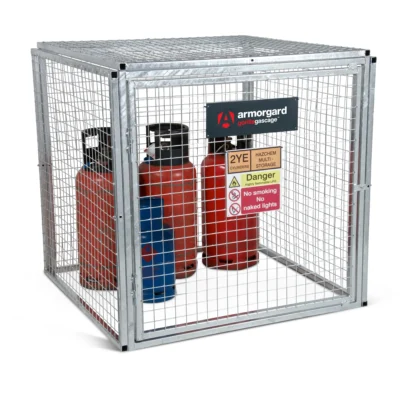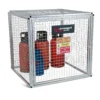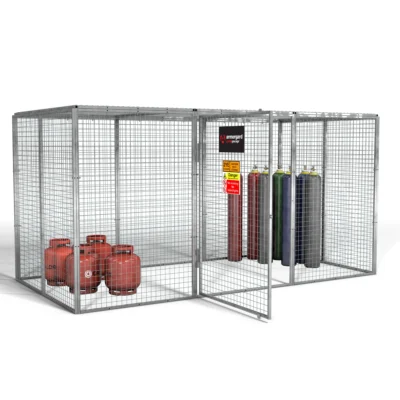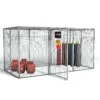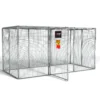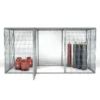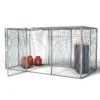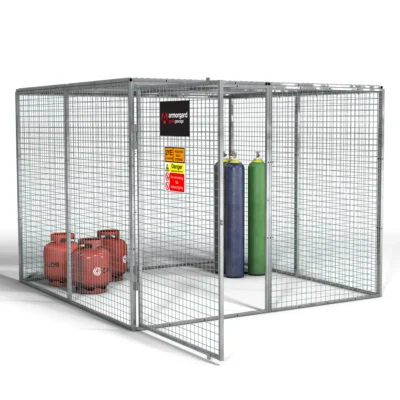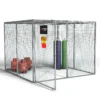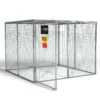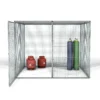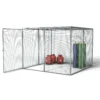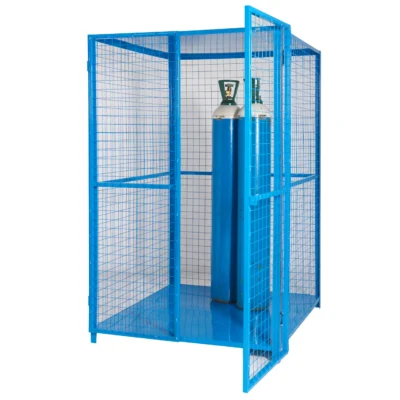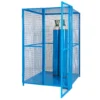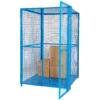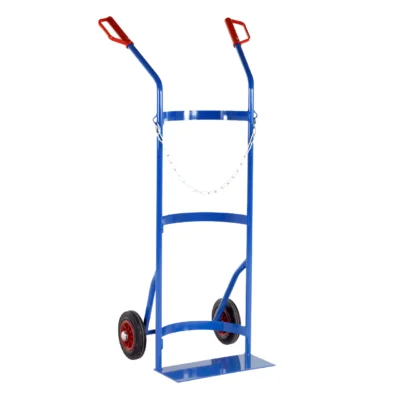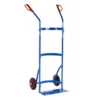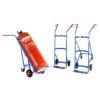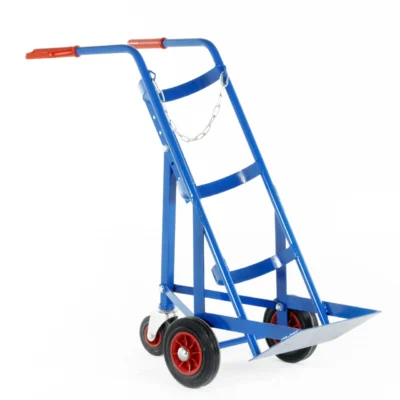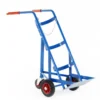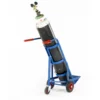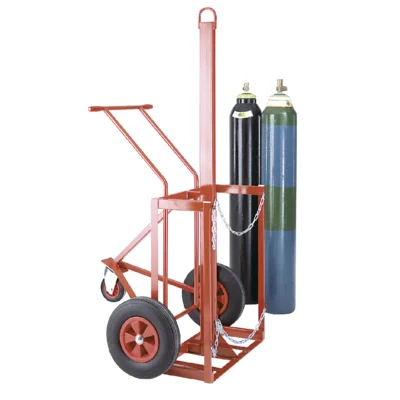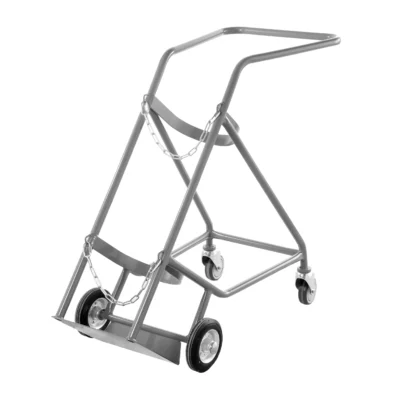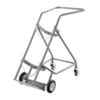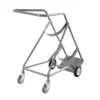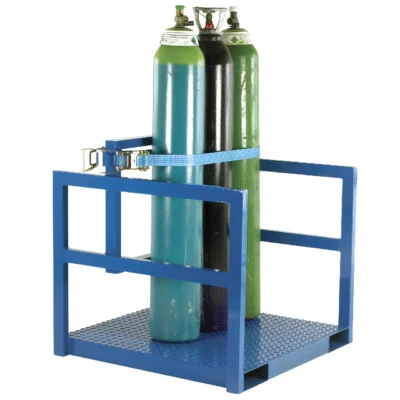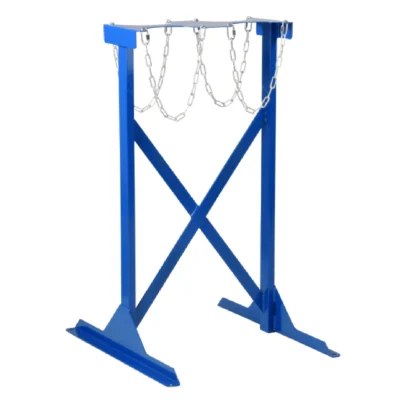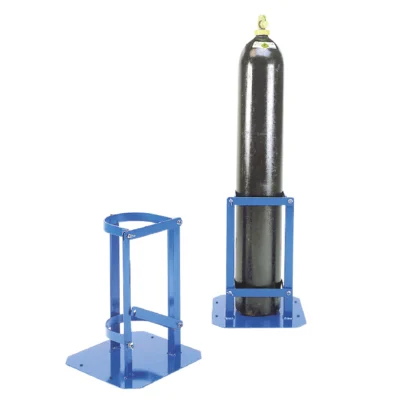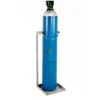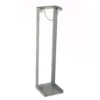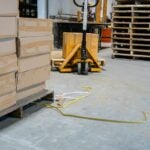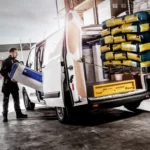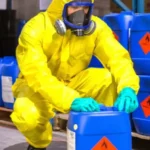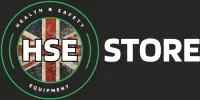Compressed Gas Cylinder Handling & Storage Safety - An Understanding
Many companies use gas cylinders on a daily basis. We frequently presume that their use is safe, because anyone can use a gas cylinder without having to demonstrate their safety knowledge. However, attention is essential for each specific application, as errors in handling gas cylinders might have disastrous results. As a result, you should follow particular safety requirements when handling gas cylinders at work and make your staff aware of them.
Accidents involving gas cylinders can cause serious injury or even death. Having the correct support and guidance on how to handle gas cylinders in the safest way possible.
The Health and safety Executive (HSE), offers guidance and support to anyone who manufactures, owns, fills, repairs or uses gas cylinders. The generic and legal term that covers gas cylinders is ‘pressure receptacle’ which also covers other types of ‘pressure receptacle’ such as tube, pressure drum, cryogenic receptacle, bundle of cylinders as well as gas cylinders themselves.
What Are Gas Cylinders? Where Are They Used?
Thousands of products are available which contain gases and mixtures of gases stored under pressure in cylinders. Most of these gases are classified as “compressed gases”.
There are three major groups of compressed gases stored in cylinders: liquefied, non-liquefied and dissolved gases. In each case, the pressure of the gas in the cylinder is commonly given in units of kilopascals (kPa) or pounds per square inch gauge (psig).
Gauge pressure = Total gas pressure inside cylinder – atmospheric pressure
Atmospheric pressure is normally about 101.4 kPa (14.7 psi). Note that compressed gas cylinder with a pressure gauge reading of 0 kPa or 0 psig is not really empty. It still contains gas at atmospheric pressure.
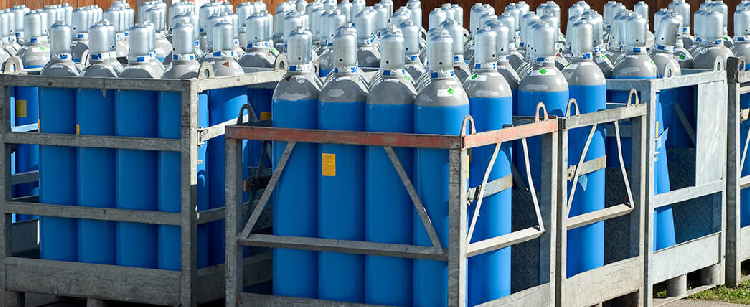
What Are The Three Major Groups Of Compressed Gases?
Liquefied Gases
Liquefied gases are gases which can become liquids at normal temperatures when they are inside cylinders under pressure. They exist inside the cylinder in a liquid-vapour balance or equilibrium. Initially the cylinder is almost full of liquid, and gas fills the space above the liquid. As gas is removed from the cylinder, enough liquid evaporates to replace it, keeping the pressure in the cylinder constant. Anhydrous ammonia, chlorine, propane, nitrous oxide and carbon dioxide are examples of liquefied gases.
Non-Liquefied Gases
Non-liquefied gases are also known as compressed, pressurised or permanent gases. These gases do not become liquid when they are compressed at normal temperatures, even at very high pressures. Common examples of these are oxygen, nitrogen, helium and argon.
Dissolved Gases
Acetylene is the only common dissolved gas. Acetylene is chemically very unstable. Even at atmospheric pressure, acetylene gas can explode. Nevertheless, acetylene is routinely stored and used safely in cylinders at high pressures (up to 250 psig at 21°C).
This is possible because acetylene cylinders are fully packed with an inert, porous filler. The filler is saturated with acetone or other suitable solvent. When acetylene gas is added to the cylinder, the gas dissolves in the acetone. Acetylene in solution is stable.
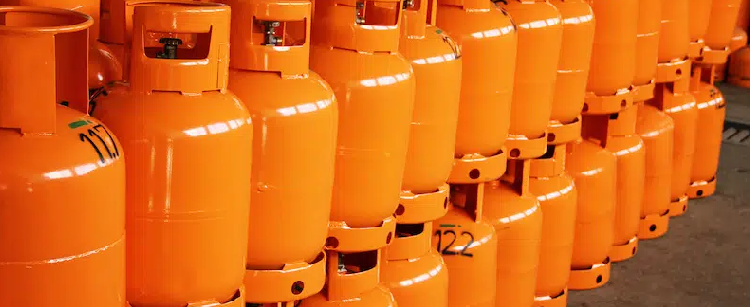
The Hazards Associated With Compressed Gas Cylinders
Flammable Gases
Flammable gases, such as acetylene, butane, ethylene, hydrogen, methylamine and vinyl chloride, can burn or explode under certain conditions:
Gas Concentration within the Flammable Range: The concentration of the gas in air (or in contact with an oxidizing gas) must be between its lower flammable limit (LFL) and upper flammable limit (UFL) [sometimes called the lower and upper explosive limits (LEL and UEL)]. For example, the LFL of hydrogen gas in air is 4 percent and its UFL is 75 percent (at atmospheric pressure and temperature). This means that hydrogen can be ignited when its concentration in the air is between 4 and 75 percent. A concentration of hydrogen below 4 percent is too “lean” to burn. Hydrogen gas levels above 75 percent are too “rich” to burn.
The flammable range of a gas includes all of its concentrations in air between the LFL and UFL. The flammable range of any gas is widened in the presence of oxidizing gases such as oxygen or chlorine and by higher temperatures or pressures. For example, the flammable range of hydrogen in oxygen gas is 4 to 85 percent and the flammable range of hydrogen in chlorine gas is 4.1 to 89 percent.
Ignition Source: For a flammable gas within its flammable limits in air (or oxidizing gas) to ignite, an ignition source must be present. There are many possible ignition sources in most workplaces including open flames, sparks and hot surfaces.
The auto-ignition (or ignition) temperature of a gas is the minimum temperature at which the gas self-ignites without any obvious ignition sources. Some gases have very low auto-ignition temperatures. For example, phosphine’s auto-ignition temperature of 100°C (212°F) is low enough that it could be ignited by a steam pipe or a lit light bulb. Some compressed gases, such as silane and diborane, are pyrophoric – they can ignite spontaneously in air.
Flash-back can occur with flammable gases. Many flammable compressed gases are heavier than air. If a cylinder leaks in a poorly ventilated area, these gases can settle and collect in sewers, pits, trenches, basements or other low areas. The gas trail can spread far from the cylinder. If the gas trail contacts an ignition source, the fire produced can flash back to the cylinder.
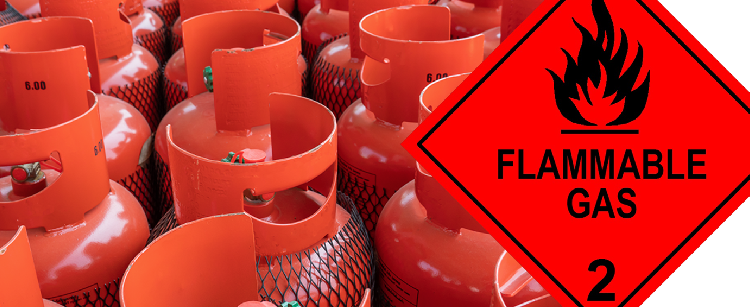
Oxidizing Gases
Oxidizing gases include any gases containing oxygen at higher than atmospheric concentrations (above 23-25 percent), nitrogen oxides, and halogen gases such as chlorine and fluorine. These gases can react rapidly and violently with combustible materials such as the following:
- organic (carbon-containing) substances such as most flammable gases, flammable and combustible liquids, oils, greases, many plastics and fabrics
- finely-divided metals
- other oxidizable substances such as hydrazine, hydrogen, hydrides, sulphur or sulphur compounds, silicon and ammonia or ammonia compounds.
Fires or explosions can result.
The normal oxygen content in air is 21 percent. At slightly higher oxygen concentrations, for example 25 percent, combustible materials, including clothing fabrics, ignite more easily and burn much faster. Fires in atmospheres enriched with oxidizing gases are very hard to extinguish and can spread rapidly.
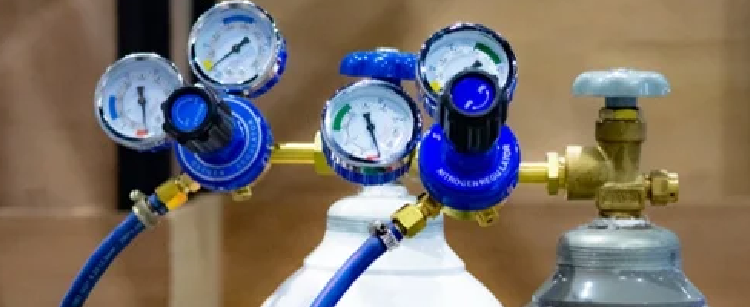
Dangerously Reactive Gases
Some pure compressed gases are chemically unstable. If exposed to slight temperature or pressure increases, or mechanical shock, they can readily undergo certain types of chemical reactions such as polymerization or decomposition. These reactions may become violent, resulting in fire or explosion. Some dangerously reactive gases have other chemicals, called inhibitors, added to prevent these hazardous reactions.
Common dangerously reactive gases are acetylene, 1,3-butadiene, methyl acetylene, vinyl chloride, tetrafluoroethylene and vinyl fluoride.

Health Hazards
Many compressed gases are toxic or very toxic. They could cause various health problems depending on the specific gas, its concentration, the length of exposure and the route of exposure (inhalation, eye or skin contact). Contact between the skin or eye and liquefied gases in liquid form can freeze the tissue and result in a burn-like injury.
Inert Gas Dangers
Inert gases, such as argon, helium, neon and nitrogen, are not toxic and do not burn or explode. Yet they can cause injury or death if they are present in sufficiently high concentrations. They can displace enough air to reduce oxygen levels. If oxygen levels are low enough, people entering the area can lose consciousness or die from asphyxiation. Low oxygen levels can particularly be a problem in poorly ventilated, confined spaces.
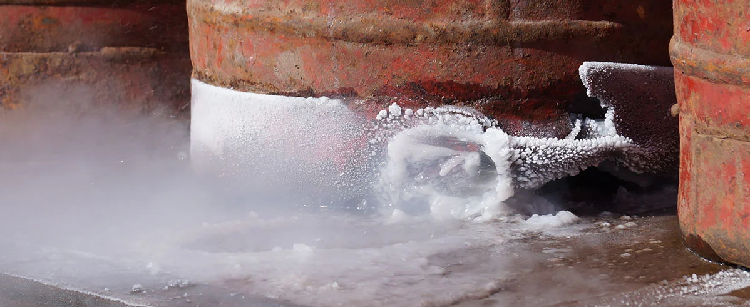
How Do I Move A Gas Cylinder Safely?
Did you know that a gas cylinder can weigh more than 70kg? This poses a risk of injury that should not be underestimated – especially during transport. It is not only people who can be injured by improper handling of a gas cylinder. The risk of damaging the gas cylinder itself is also greatly increased during transport. In the event of a fall, for example, the valve, the weakest point of the gas cylinder, can break off and lead to a sudden release of the pressurised contents. Gas cylinders can turn into projectiles that can even penetrate concrete walls. Therefore, some safety requirements must be observed when gas cylinders have to be transported. In general, you should only transport gas cylinders with the valve cap screwed on and also protect the gas cylinders from excessive heat during transport to prevent pressure increases in the cylinder.
Again, remember to first put on the appropriate PPE (e.g. safety shoes and Protective gloves). Bumping, throwing and rolling horizontally are absolutely forbidden when transporting gas cylinders. In general, gas cylinders should not be carried by people or rolled while standing. Use Gas cylinder trolleys and transport racks instead. These professional tools are particularly recommended for regular activities and have numerous safety features that prevent the gas cylinders from falling over, rolling away or bumping into each other during transport. If it is necessary to transport the gas cylinder to other floors, people and gas cylinders must never ride together in a lift. You should only transport gas cylinders by crane if they are on a pallet. For this purpose, we offer special craneable gas cylinder pallets in our online shop. You will also find gas cylinder trolleys and transport racks for forklift trucks or pallet trucks in our extensive range.
The transportation of gas cylinders is incredibly important. The vehicle must be suitable for the purpose and be marked to warn other drivers and pedestrians that it is carrying dangerous and possibly flammable goods. The driver must be suitably trained on how to drive the vehicle as well as handling the cylinders themselves and must carry the appropriate documentation.
Loading and unloading gas cylinders should be a safe and secure operation. It is important that the cylinders are safely restrained or contained when this is in process. Cages, trolleys and containers are a great way of keeping the cylinders in an upright position, unless stated otherwise by the manufacturers.
Just like the vehicles, the cylinders should be marked with signs associated with their contents and their hazards. It may be necessary to take extra measures and precautions with certain types and volumes of gases and fluids to make sure they are safely transported.
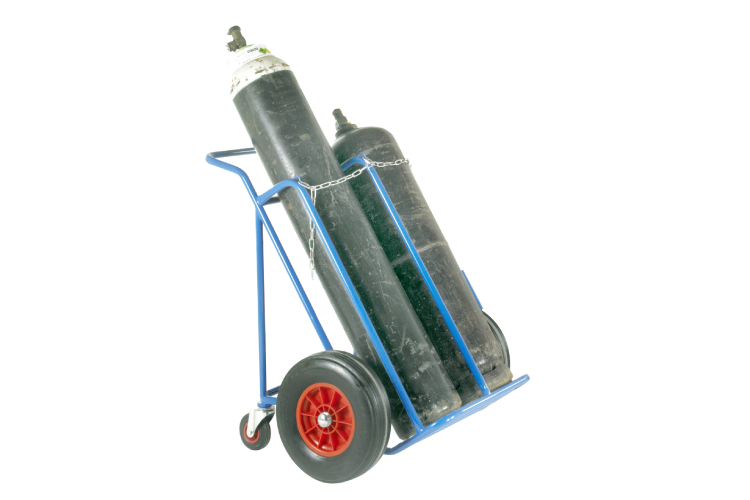
How Do I Store Gas Cylinders Safely?
Gas cylinders are mobile pressurised gas containers and are used in numerous industries. For example, when welding in workshops, working in laboratories or as a refrigerant in cooling and freezing applications. There are many hazards associated with handling gases – which in many ways makes them more challenging to store than liquid hazardous materials.
When storing pressurised gas containers, a distinction is made between storage in rooms and storage outdoors. In each case, generally applicable safety regulations as well as specific safety regulations must be observed depending on the storage location.
Storage Or Provision
Watch out for the differences! Many companies need to store gas cylinders to ensure a constant supply. If compressed gas containers are kept in stock, this is considered to be storage. On the other hand, it is considered to be provision if you keep filled gas cylinders to hand in the respective required number and size…
to connect to the extraction facility as soon as possible (insofar as this is necessary for the work process),
at workplaces for manual use,
on loading ramps or areas for subsequent removal within a short time,
in salesrooms for the presentation of the product range
Indoor Storage Of Cylinders
An outdoor gas cylinder store is ideal from many points of view, however it’s not always practical. If additional protective measures are taken, it is also possible to store gas cylinders indoors. In addition to adequate ventilation, the following requirements, among others, must also be met:
Ceilings, partitions and external walls of storage rooms must be at least fire-retardant
Storage rooms must be separated from adjacent rooms by self-closing fire-retardant doors
Only electrical systems and equipment in explosion-proof design may be used in storage rooms for combustible gases
The floor covering must be made of flame-retardant material
In storage rooms, a minimum distance of 2 m shall be maintained between gas cylinders containing combustible gases and those containing oxidising gases.
No pits, ducts, floor drains or chimney cleaning openings may be present in storage rooms
The distance between compressed gas cylinders and radiators etc. must be at least 0.50 m
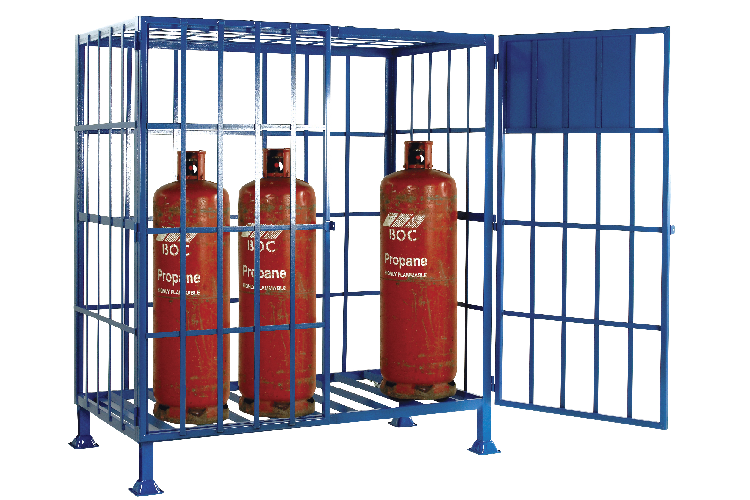
Outdoor Storage Of Cylinders
Generally, storage outdoors is the best alternative, as sufficient ventilation can then be ensured naturally. Open storage is a store which is open on at least two sides, or open on one side if the depth – measured from the open side – is not greater than the height of the open side. A side is considered to be open if it consists of a wire mesh or similar.
Gas cylinder cabinets and gas cylinder containers for outdoor use offer optimum conditions for safe, legally-compliant storage of gas cylinders. They have mesh side walls or ventilation slits in the walls allowing natural ventilation. Canopies ensure sufficient weather protection. Many gas cylinder cabinets and containers also have retention devices or safety chains to effectively prevent the gas cylinders falling over. Additional advantage: gas cylinder cabinets and containers are generally lockable and therefore meet the requirements to protect the store against unauthorised access.
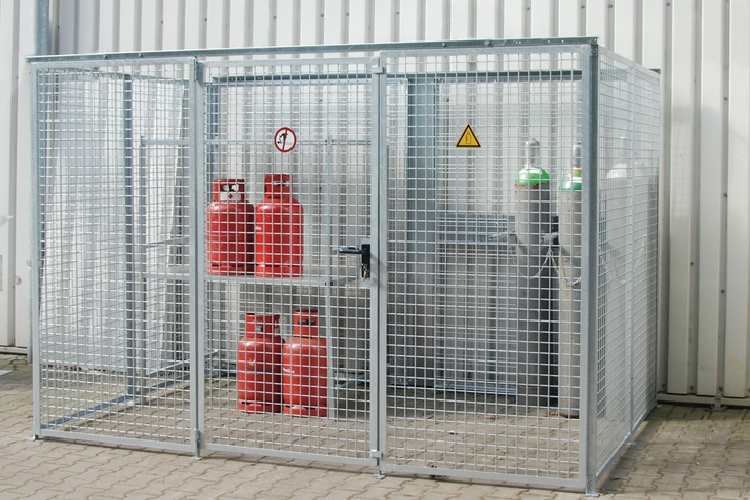
What Products Are There To Handle & Store Cylinders?
One thing we are passionate about here at HSE Store, is giving as much information we can so that you can make the best decision from the start. There is nothing worse than making a purchase and realising what you bought is the wrong model, or the wrong type for the application and task at hand.
Below we will outline all the things you should be considering when looking through our range of gas cylinder storage and handling for your business.
Indoor gas cylinder storage cages are critical safety measures in many industrial and commercial environments where gas cylinders are used. These cages are intended to safely confine and organise gas cylinders, so avoiding potential hazards like as leakage, damage, or unauthorised access. These cages, which are typically made of sturdy materials such as steel or aluminium, provide strong protection against mistreatment or unintentional collisions, maintaining the cylinders’ integrity. They are equipped with locking mechanisms and thick mesh walls, which not only protect against theft and tampering but also provide proper ventilation, which is critical for dispersing any gas leaks that may occur.
Furthermore, indoor gas cylinder storage cages are frequently customisable to meet the unique requirements of various sectors and environments. Whether in a laboratory, production plant, or warehouse, these cages can be customised in size and configuration to handle different amounts and types of cylinders, maximising space utilisation while conforming to safety rules. In addition, many cages include forklift pockets or wheels for easy movement and relocation, allowing for more efficient inventory management of gas cylinders.
Industrial cylinder trolleys and trucks are vital tools for safely moving and manoeuvring significant gas cylinders in industrial environments. These trolleys and trucks, designed with solid construction and ergonomic characteristics, allow for the easy and efficient movement of cylinders, lowering the danger of accidents or injuries connected with manual handling. They use specialised systems such as straps, chains, or clamps to firmly keep cylinders in place during transit, preventing them from shifting or falling.
Furthermore, industrial cylinder trolleys and trucks are frequently designed to be versatile, accommodating a wide range of cylinder sizes and forms that are routinely used in diverse sectors. These trolleys and trucks can handle a variety of cylinder types, including oxygen, acetylene, and other gases, enabling for seamless operations in a wide range of industrial environments. They improve worker safety and productivity by providing a dependable way to transfer gas cylinders throughout the plant, with features such as pneumatic tyres for smooth travel across difficult terrain and adjustable handles for ergonomic convenience.
-
Propane & Calor Cylinder Truck | 2 Wheel
From £283.55 Ex. VAT Select options This product has multiple variants. The options may be chosen on the product page -
Tall Single Cylinder Support Truck
From £332.87 Ex. VAT Select options This product has multiple variants. The options may be chosen on the product page -
Cylinder Lifting Trolley | Double Cylinder
From £825.47 Ex. VAT Select options This product has multiple variants. The options may be chosen on the product page
Cylinder storage racks help to keep the workplace organised and safe by providing an organised and secure storage option for gas cylinders. These racks are often made of robust materials like steel or aluminium, allowing them to support the weight of many cylinders while also resisting corrosion and other environmental variables. Cylinder storage racks are designed with movable slots or compartments to accommodate cylinders of various sizes and types, allowing for efficient storage and retrieval based on the facility’s individual demands.
Plus, cylinder storage racks are designed with safety in mind, including elements like chain restraints, straps, or clamps to keep the cylinders in place and prevent them from toppling or dropping. By systematically organising cylinders and providing a sturdy storage solution, these racks not only maximise floor space but also contribute to overall workplace safety, allowing employees to walk with confidence and ease.
Cylinder pallets and forklift attachments are critical components in industrial environments where gas cylinders must be efficiently stored and transported. Cylinder pallets are designed to firmly keep numerous cylinders in place, with slots or compartments specifically fitted to particular cylinder sizes and types. These pallets, made of durable materials such as steel or plastic, provide a strong foundation for cylinders, ensuring they remain upright and secure during handling and storage.
Cylinder pallets and forklift attachments are designed to be adaptable to a wide range of cylinder sizes and configurations used in a variety of sectors. These pallets and attachments are designed to accommodate a variety of cylinder types, including oxygen, acetylene, and other gases, giving flexibility in storage and transportation solutions. Furthermore, many forklift attachments have ergonomic designs and safety features like load indications or automated locking mechanisms, which improve workplace efficiency while lowering the risk of accidents or injuries.
Cylinder floor stands are essential components in businesses that use gas cylinders, providing a secure and organised storage option. These platforms are often made of strong materials like steel or aluminium, which provide a solid foundation for cylinders while keeping them upright and secure. Floor platforms, which are designed with slots or compartments to accommodate different cylinder sizes and kinds, help to keep cylinders from rolling or tipping over, lowering the risk of workplace accidents and injuries. Furthermore, many cylinder floor platforms include features like adjustable brackets or straps, allowing for easy customisation to meet the unique needs of various sectors and applications.
Cylinder floor stands help to optimise space utilisation in the workplace by keeping cylinders organised and accessible. These stands, whether used in laboratories, manufacturing facilities, or warehouses, provide a defined storage area for cylinders, reducing clutter and increasing floor space. Furthermore, its portability allows for greater flexibility in positioning, allowing staff to readily reposition cylinders as required. By implementing cylinder floor stands into their operations, businesses may improve safety, optimise workflow, and assure correct gas cylinder storage and handling, resulting in a more efficient and productive workplace.
-
Heavy Duty Floor Fixing Cylinder Rack | 4 Cylinder
From £240.55 Ex. VAT Select options This product has multiple variants. The options may be chosen on the product page -
Hinged Latch Cylinder Floor Stand
From £203.08 Ex. VAT Select options This product has multiple variants. The options may be chosen on the product page -
Economy Single Cylinder Floor Stand
From £111.45 Ex. VAT Select options This product has multiple variants. The options may be chosen on the product page -
Heavy Duty Floor Fixing Cylinder Rack | 6 Cylinder
From £285.52 Ex. VAT Select options This product has multiple variants. The options may be chosen on the product page
Final Thoughts
We hope that you enjoyed reading our guide and found it very engaging and something to think about very carefully from a health and safety point of view while at the same time a revenue increasing investment for your business.
We only supply the best top quality safety equipment here at HSE Store that is manufactured right here in Britain.
For further reading, see the rest of our knowledge base articles by clicking here.
You can view the entire range of our cylinder handling products by clicking below.
While we do write our own information utilising our expert knowledge, we also have to use information sources from elsewhere to give you the best information possible.
Credit for some of our information sources:

